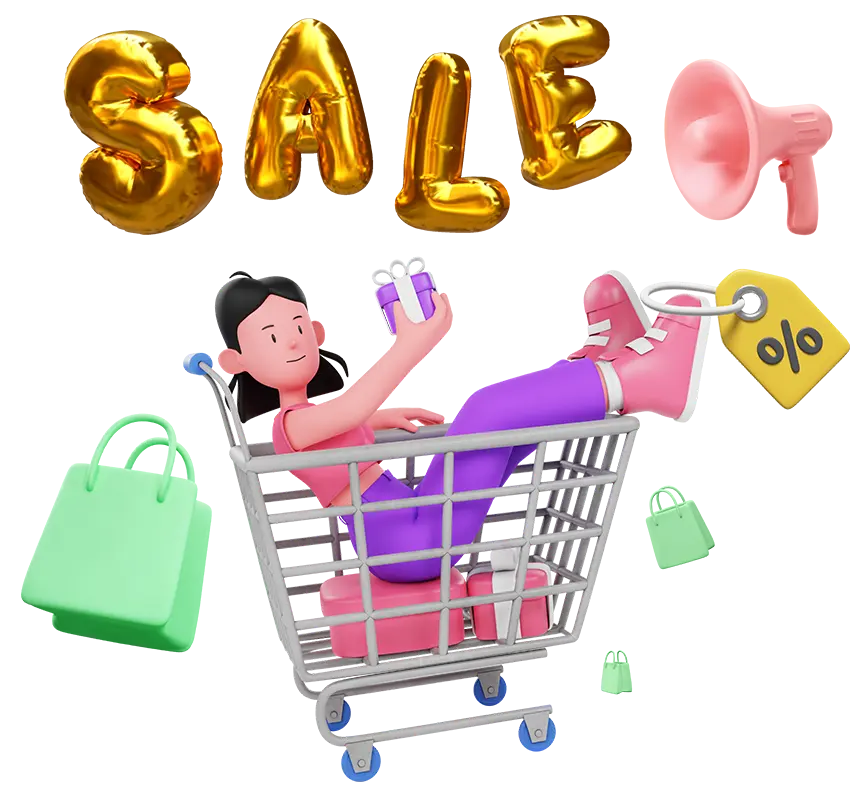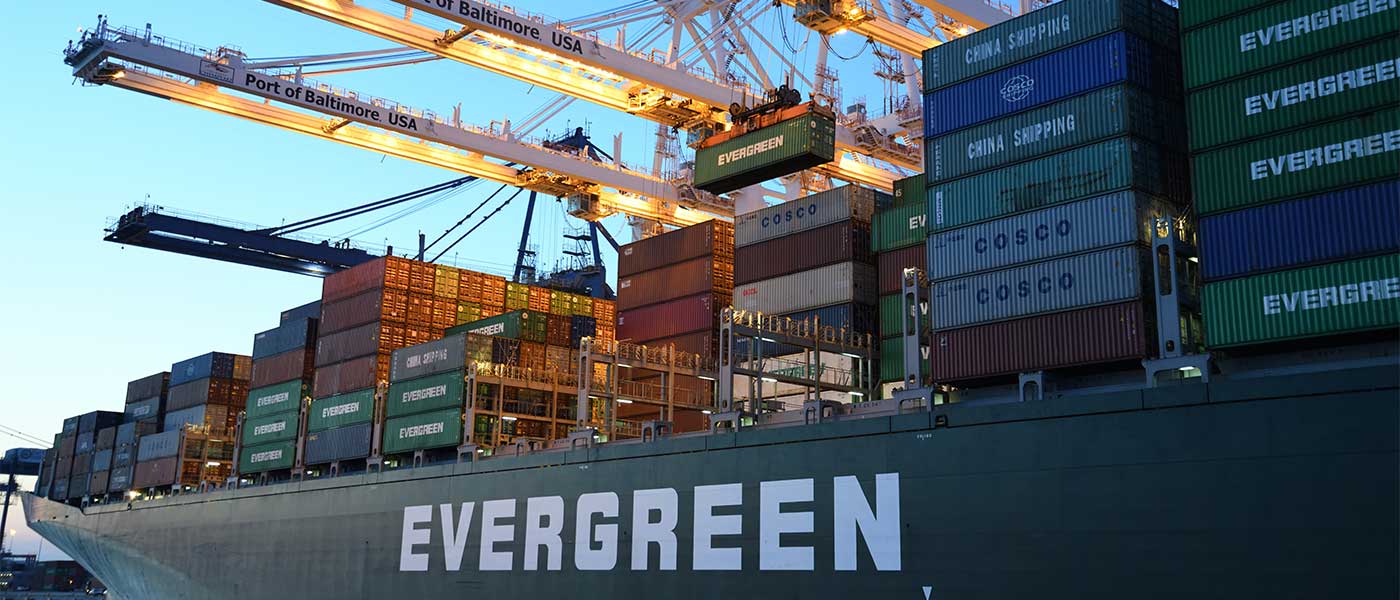What is Multichannel Fulfillment?
Multichannel fulfillment, or MCF, is the product fulfillment mechanism allowing retailers and merchants to sell through various channels. This way, the merchants can leave the shipping and packaging aspects of individual channels up to the marketplace. In short, the individual selling channels have different delivery methods, order processing flow, and inventory.
With multi-channel fulfillment, merchants also have the added perk of having and managing a distribution centre independent from the other sales channels. Thus, even if you have multiple stores and channels, each will function distinctly.
To compare, multi-channel fulfillment is identical in methodology to multi-channel marketing. There is no crossover in the procedures leading up to order fulfillment, and selling activity isn’t confined to one channel.
What is Omnichannel Fulfillment?
As the name suggests, the omnichannel fulfillment strategy refers to a unified retail approach. In this e-commerce fulfillment process, there is a complete integration of different retailing points like order fulfillment, customer service, and inventory.
No matter where the customer orders from, the store or online shop, the same inventory and order fulfillment process is used. Such an approach helps merchants and retailers sell to customers at their convenience. Additionally, through this strategy, merchants can easily integrate their physical stores for in-store pickups and returning of online orders.
Instead of considering the various sale points as independent silos, omnichannel fulfillment produces a singular experience for the customer. As a result, it prevents spillovers from the different marketing and sales channels in fulfilling products.
Pros and Cons of Omnichannel Fulfillment vs Multichannel Fulfillment
Before we initiate the Omnichannel vs Multichannel debate, we need to familiarise ourselves with the advantages and disadvantages of both approaches. With e-commerce penetration rates high in Asia-Pacific countries like Thailand, Australia, the Philippines, and Indonesia, learning the pros and cons of these retail models can help businesses grow.
Multichannel Fulfillment
Pros
- Through multichannel fulfillment, merchants are in contact with warehouse fulfillment providers. As a result, they get various options to ship their products. Additionally, if the products are sold through a particular e-commerce fulfillment service, then the e-commerce warehouse takes care of inventory storage. Thus, this eliminates the need to contact third-party warehouses.
- Due to the multi-channel fulfillment route, merchants often partner with third-party logistics to streamline warehouse services. This leads to trained professionals handling shipping, order packaging, and stocking inventory. This, in turn, solves the problem of stockouts and backorders, which often arise from listing products on different channels.
- Customers can look for your products on different sales channels and order them whenever and wherever. Your brand is also exposed to a significantly broader customer base.
- By using the multichannel approach, merchants and retailers can analyse their competition. Through this analysis, you can understand their different sales channels. You can use those channels to your advantage.
- Customers have the freedom to choose the most convenient option to shop and pay. The online marketplace, which forms the backbone of multi-channel fulfillment, also acts as a great search engine for products. Both these aspects factor in to increase revenue and sales.
Cons
- With so many different sales channels, each with its own separate procedures, management becomes a problem in multi-channel fulfillment.
- Limited shipping options can plague merchants taking orders from different channels. Moreover, in many multi-channel fulfillment services, goods like aerosol products and flammable and perishable materials are severely restricted.
- Unfortunately, many such multi-channel retail services don’t provide the option for returns. There runs a high probability of customers being dissatisfied if in-store returns or pickups are not viable options.
- Hiring storage units can be expensive for a retail business. If different sales channels need other storage units, the added costs can become too much for the company to bear.
- Inventory management is a big part of multichannel fulfillment. Separate stock caches for various channels make inventory planning really complicated. Plus, most of your capital gets tied into the inventory.
Omnichannel Fulfillment
Pros
- The most important advantage of the omnichannel fulfillment strategy is the retailers have a unified and single inventory. Hence, businesses become cost-effective and can easily be more productive and efficient.
- The unified inventory system will also give retailers better results in their inventory forecasting.
- Customers can seamlessly switch from one channel to another since all channels have an identical central approach.
- Browsing, purchasing, and returning items are hassle-free, with both in-store pickup and delivery options available for all channels.
- Omnichannel fulfillment builds on a unified customer experience to develop customer loyalty. This approach boosts and promotes a cohesive brand image for your company.
Cons
- One of the few drawbacks of the omnichannel approach is that it puts a lot of pressure on brick-and-mortar stores. These shops have to work around the clock to schedule orders, returns, and in-store pickups.
- Good networks and infrastructure can only facilitate a unified inventory with multiple sales channels. Setting up infrastructure and distribution channels for companies can be expensive and time-consuming.
How Does Multi-Channel Fulfillment (MCF) Work?
We have already established that multi-channel fulfillment works through various sales channels. These channels are usually the website, social media sites like Facebook, Instagram, and Pinterest, and online marketplaces. Now, you have different orders that you have received from these sites, and you have different fulfillment-providing mechanisms attached to each channel.
For example, you have a particular fulfillment provider for orders related to your website. They maintain an inventory of your products. Once you receive the order and the shipping details, you pass them to the e-commerce fulfillment service providers who pack and ship the product. This linear flow is repeated for the other channels in the MCF system.
How Does Omnichannel Fulfillment Work?
With a unified inventory, the omnichannel fulfillment strategy has a flexible and agile workflow. This process does away with the traditional online order to the warehouse to the customer linear flow. Several business retailers can leverage the unified inventory to provide multiple fulfillment solutions for their customers:
- The BOPIS, or Buy Online, Pick-up In Store
- The ROPIS, or Reserve Online, Pick-up In Store
- Home Delivery for Online Purchases
- Home Delivery for In-store Purchases
- Retailers can ship from stores by connecting their store inventory to the website and turning the store into a fulfillment centre.
- The BORIS, or Buy Online, Return In Store
- Buy Online, Return through Home Pick-up
However, it is essential to note that businesses having a physical store don’t automatically follow the omnichannel fulfillment strategy. Suppose the selling and the fulfillment experience are completely integrated for the customer. Only in that case can we say that omnichannel fulfillment is being followed.
Omnichannel vs Multichannel Differences
As is quite evident from their name, there are plenty of Omnichannel vs Multichannel differences. The primary difference lies in the way both methods handle the inventory. Of course, there are other procedural and workflow deviations within the Multichannel vs Omnichannel debate.
| Multichannel Fulfillment | Omnichannel Fulfillment |
| There isn’t any singular inventory in this strategy. Instead, different sales channels may have other inventories. | For this approach, there is a unified and singular inventory and order processing mechanism for all sales channels. |
| Merchants and retailers may use contrasting sales and marketing tactics in different channels. | An integrated and similar strategy is followed for all marketing and sales channels. |
| Unfortunately, the customer journey is limited to one channel in MCF. | Customer journey is unrestricted in omnichannel fulfillment, with customers seamlessly changing from one channel to another. |
| The product and how to amplify it is the primary focus for multi-channel fulfillment. | In an omnichannel fulfillment strategy, the customer experience while buying a product takes centre stage. |
Omnichannel vs Multichannel Examples
Brands like Shopify and BigCommerce uses an omnichannel approach, while Ecwid and Square Online are examples of companies using the multi-channel fulfillment model.
Multichannel vs Omnichannel Fulfillment: Which is Better for Your Business?
For most retailers, their e-commerce stores and physical stores are different entities. Unfortunately, customers aren’t most likely to be aligned with that view. The online and physical store channels are generally considered part of the same brand, with most consumers expecting to move between them seamlessly. Any hindrance to this seamless cross-channel movement may force customers to shop somewhere else.
This problem can be solved by employing an omnichannel fulfillment strategy. Through an integrated inventory and marketing approach, customers can navigate their shopping journey at their convenience and with much more freedom. As a result, customer loyalty and brand value both increase.
However, omnichannel fulfillment can be difficult for small businesses to manage. These strategies cannot be worked out manually and need logistics softwares to run. Due to be integrated tightly with the various channels, secure inter-channel communication can be difficult to build.
This is where multi-channel fulfillment comes into the equation. Its straightforward workflow is much easier for companies to manage. The different fulfillment channels can be dealt with separately, allowing companies to focus on the critical channels for order fulfillment.
When Should You Choose Omnichannel or Multichannel?
1. When Should You choose Omnichannel?
Various brands use omnichannel fulfillment strategies when they are in need to create a reliable brand image and enhance customer satisfaction. Such strategies also help streamline multiple channels into one integrated model efficiently.
2. When Should You Choose Multichannel?
Multi-channel fulfillment can be helpful to many companies across multiple business situations.
You might want to keep separate inventories for separate channels as a retailer. Multi-channel fulfillment is the way to go in that scenario. This approach also comes in handy when individual demand forecasts are required for the various sales channels.
Most merchants and retailers also use multi-channel fulfillment when they face the need to provide a flexible brand experience for their diverse audience.
5 Tips for Omnichannel Success
The most important aspects of omnichannel fulfillment are coordination and efficient planning. Here are five tips to help you achieve omnichannel success:
- A great inventory management system is vital for omnichannel fulfillment. A unified inventory helps overcome the silos present between multiple channels. When inventory data is shared effectively, a convenient and flexible customer-centric experience is created. This approach also lets companies adopt lean inventory strategies.
- Customers won’t have a great omnichannel experience unless you have the correct tools to make cross-channel switching seamless. Prioritising such hassle-free inter-channel switches, along with encouraging customers to switch actively, will almost always lead to success.
- Employing a real-time warehouse management system is quite beneficial for omnichannel success. Such management systems help track and synchronise real-time order and fulfilment capacities.
- Selecting an appropriate e-commerce fulfilment service provider for your firm is vital. Unless the fulfillment partner can effortlessly sync between the various channels, customers won’t get the seamless experience you wished to offer them.
- If you have physical or brick-and-mortar stores, you must train your employees to manage the increased footfall after adopting the omnichannel fulfillment strategy. They must be adept at packing the goods from the store and helping customers with store pickups and item returns.
4 Tips for Multi-channel Success
While it may not be as effective as omnichannel, multichannel fulfillment can boost retail businesses. Here are three tips to ensure your success in this approach:
- Understanding and forecasting demand is crucial for such an approach. Through analysing data, you can have a smart inventory management system that ensures that the right customers can order the right products.
- Brands and retailers need to be flexible and quick to learn in this approach. They must be open to trying out new strategies in channels that are not bringing in the predicted numbers.
- Storing inventories in different warehouses worldwide or within a country can help reduce the shipping cost and delivery time.
- Investing in the right inventory management system can significantly improve your chances of success with the multichannel fulfillment strategy!
Conclusion
Customers in the present day and age have no lack of options when it comes to shopping. Such multiple and varied demands are leading businesses to either adopt a multichannel fulfillment approach or an omnichannel fulfillment approach.
When planned effectively, the multichannel strategy can take advantage of customers using various channels for online shopping. However, certain limitations of this model, along with brands choosing to provide a unified customer experience, have led to the rise of omnichannel fulfillment as the preferred alternative.











